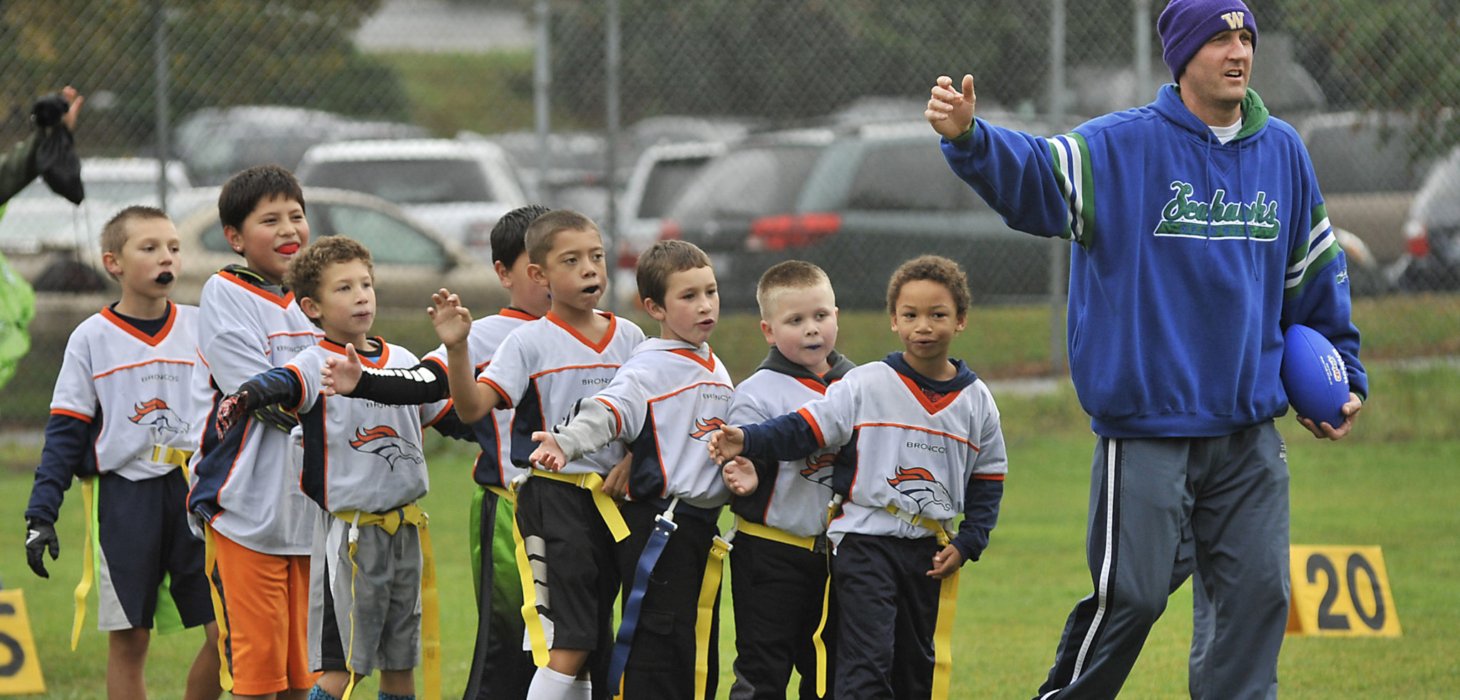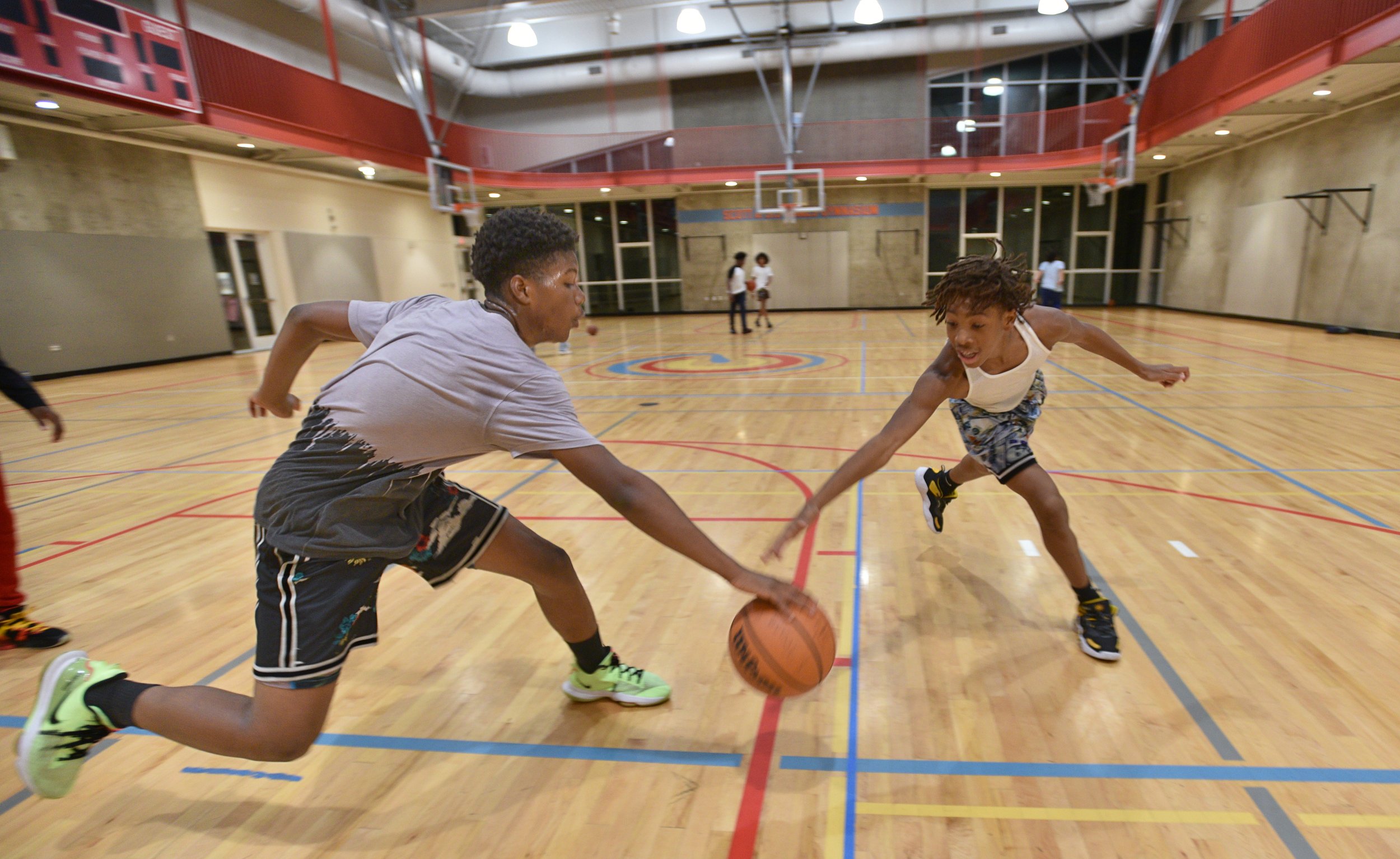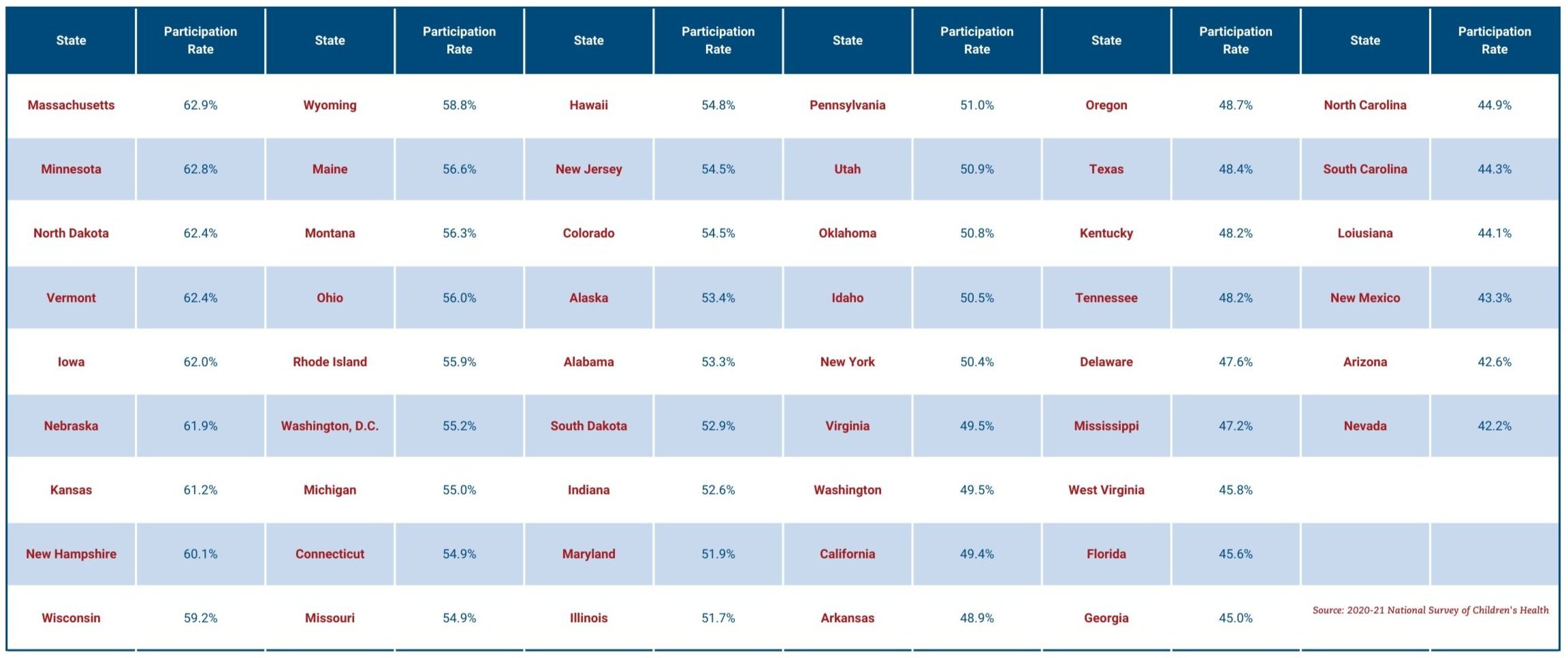Participation Trends
Coming out of the COVID-19 pandemic, families have greater awareness of the value of physical activity and sports, although more children are moving to the pay-to-play model at younger ages. The trends below come from the Aspen Institute’s State of Play 2023 report, informed by interviews with leaders in the youth sports space, data analyzed by the Project Play team, or articles and research produced by other entities.
Top 5 Participation Trends
1
Children are playing team sports less regularly. This trend started before the pandemic, which may have accelerated the change even more. Core team sports participation (meaning playing on a regular basis) for youth ages 6-17 declined 6% between 2019 and 2022. That translates to 1.2 million fewer youth regularly playing team sports, according to data from the Sports & Fitness Industry Association (SFIA). Total team sports participation (meaning playing at least once in the past year) stayed flat. In other words, kids are trying sports about as much as they did before COVID-19. They’re just not playing as frequently.
“If this trend continues with core (participation) going down over time, that would be bad,” said Tom Cove, SFIA president and CEO. “But we really believe it’s way too early to make any kind of judgment like that. We’ve never had greater awareness at the child and parent level of the benefits of being physically active and playing youth sports. That’s an outcome of COVID.”
Cove said elementary-age children’s departure from sports was accelerated during COVID-19 due to the inability to convene on teams. Now everybody, including children, has reevaluated how they prioritize leisure time.
“None of us should misunderstand that a lot of kids play sports less because they love a sport and more because they want to be with friends,” Cove said. “When you break up a team, a child gets into other routines and doesn’t get to be with their friends, so they figure out other ways to be with their friends besides sports.”
Core participation declined 5% for kids 6-12 from 2019 to 2022, but total participation increased 3%. The good news: in 2022, 63% of kids 6-12 played sports at least one day (the best rate in a decade) by SFIA’s measure. Meanwhile, 36% played regularly (the lowest rate in a decade). Ten years ago, the gap between core and total participation was half of what it is now.
5%
Decline in regular sports participation for kids 6-12 from 2019-2022
For older youth ages 13-17, total and core participation from 2019 to 2022 decreased by 7% and 6%, respectively. When a teenager gets cut from travel or school teams or can’t access club sports due to costs and transportation, fewer recreational opportunities exist to play casually.
More children may be turning to other interests like video games, social media or individual adventure activities because the commitment needed to consistently play team sports requires too much time and money, said Jason Clement, CEO at The Sports Facilities Companies, which manages more than 30 youth sports facilities across the U.S. Clement said COVID-19 allowed families to take “a chill pill,” and while some didn’t want to rush back intensively in sports, they faced fewer quality recreational opportunities.
“There’s a limit on time, which is our most important resource,” Clement said. “We’re finding more families migrating to the pay-to-play model at a younger and younger age. Even the families who say they want to wait until age 10 are getting pulled into it at 8. The collision of rec sports and sports tourism has happened, and sports tourism is winning because parents want what’s best for their child’s skills and the quality of local leagues is really watered down.”
2
Sports participation is increasing for girls and declining for boys. Boys (40%) still regularly played sports at a higher rate than girls (35%) among ages 6-17 in 2022, according to SFIA data. But the two genders are going in opposite directions. A decade ago, half of boys regularly played sports. Meanwhile, the latest participation rate for girls is the highest since 2013.
Between 2019 and 2022, girls participation for ages 13-17 increased three percentage points while boys dropped one point. Boys still comprise 1.2 million more high school sports roster spots than girls, according to the National Federation of State High School Associations, primarily due to large football rosters. And separate federal government data still shows major gaps by gender through state-by-state data (see further below on this page).
Meanwhile, youth 6-12 from the lowest-income households increased their regular sports participation rate four straight years. It dropped four straight years for the highest-income youth, suggesting declining quality of experiences among kids with the greatest opportunities to play. The gap remains significant – 25% participation for kids in homes earning under $25,000 vs. 39% among those earning $100,000 or more.
Efforts to provide greater access to all children by schools, nonprofits, professional leagues and others may be making a dent at younger ages. However, for youth 13-17, participation from the lowest-income homes keeps declining and was down to 27% in 2022 compared to 38% in 2012. The trend is one reason the Aspen Institute created a School Sports Equity Toolkit, part of its Reimagining School Sports project.
Regular sports participation among Asian youth 6-12 increased to 42% in 2022, up from 35% in 2019 before the pandemic. It’s the highest rate for Asian youth since at least 2012. Participation by children of other races and ethnicities dropped two to four percentage points between 2019 and 2022.
3
High attrition rates remain a problem – and free play offers an opportunity. Churn rate, meaning the percentage of youth who stopped playing a sport each year, often exceeds 40% to 50% for sports tracked by SFIA. Tackle football (27%), flag football (32%) and basketball (31%) had the lowest churn rates in 2022. Track and field (56%), swimming (54%) and lacrosse (54%) had the highest. The more participants a sport loses, the greater need for the sport to recruit new children.
Basketball clearly remained the most-played sport coming out of the pandemic, with nearly 1 in 4 youth playing it at least once in 2022 (total participation). While total participation in most sports decreased or stayed flat between 2019 and 2022, basketball’s rate for ages 6-17 increased 15%. Baseball dropped 6% and soccer declined 1%. Basketball had 3.6 million more total participants than the next-closest sport (baseball) in 2022 – an increase of 2 million between the sports since 2019.
Jason Frazier, president of Skyhawks Sports Academy, a youth sports camp franchise across the country, attributes much of basketball’s growth to the creative genius of Stephen Curry and the Golden State Warriors. “We first started seeing more interest in northern California and thought this was a local thing,” he said. “It spread across the country. We asked people why, and they kept going back to the power of this one team and superstar. It’s not the only reason, of course. It’s also a sport you can play individually and at a low cost with friends on playgrounds.”
Cove said the lesson of basketball’s growth is very clear: free play. “We allow them to play by themselves in basketball like everyone else around the world,” he said. “There was a time in the 1950s when baseball dominated with free play. Soccer around the rest of the world is always played casually. This country has a tough time meeting that reality. If nothing else, if we could drive kids to self-form their own play and build creativity, we would increase participation.”
Basketball’s core (or regular) participation rate basically stayed flat between 2019 and 2022. Swimming, lacrosse, wrestling, cheerleading and gymnastics experienced significant declines for core participation. Soccer was the only team sport with a significant increase among kids 6-12 coming out of the pandemic. “We think we’re approaching the golden age of soccer in the U.S.,” Cove said, citing Lionel Messi in MLS, the 2026 Men’s World Cup coming to the U.S., and the 2028 Los Angeles Olympics. “It’s also not insignificant that soccer made policy mistakes over 10 years (soccer changed its birth-year registration cutoff limit, preventing kids from playing with friends) that lost 1 million players, so there’s room to grow.”
Tackle football’s core participation rate jumped 7% among children ages 6-12 in 2022, blunting a 13% loss since 2019, according to SFIA. Flag football in that age range was about the same in 2022 as it was in 2019, with 277,000 more participants than tackle. Tackle in high schools experienced a one-year participation increase of 6% in 2022, nearly twice the post-COVID rebound of other sports, according to data from the National Federation of State High School Associations. Football is positioned for future growth with flag being added as an Olympic sport at the 2028 Los Angeles Games, along with baseball, softball, lacrosse, squash and cricket.
4
Massachusetts and Minnesota lead the way among U.S. states for participation. The federal government set a national goal for youth sports participation to reach 63% by 2030. During the heart of COVID-19, Massachusetts and Minnesota reached that number, with North Dakota, Vermont, Iowa, Nebraska, Kansas and New Hampshire close behind, according to the 2020-21 National Survey of Children’s Health (the most recent data available). The national average was 51%. The survey asks parents of children ages 6-17 if their child played on a sports team or took sports lessons in the past year.
Overall Sports Participation by State
% of youth ages 6-17 who played on a team or took lessons (2020 and 2021)
Hover over the map for state specific data
Nevada had the lowest participation rate (42%) from the 2020-21 survey, which is the most recent data available. Southeastern states comprised nine of the 16 lowest participation rates despite many of their governments adopting less-restrictive gathering policies during COVID-19. Seven Southeastern states placed in the bottom 10 for girls’ participation, including South Carolina, North Carolina, Mississippi and Tennessee each having a gap of at least 10 percentage points between boys and girls participation.
Six states surpassed the 63% benchmark for boys’ participation (Iowa, Kansas, Massachusetts, Minnesota, Nebraska and Vermont). Only two states reached 63% for girls (North Dakota and Massachusetts). The percentage of girls who played sports ranged from 65% (North Dakota) to 36% (Nevada). Five states had higher participation rates for girls than boys (Illinois, Massachusetts, North Dakota, Oklahoma and West Virginia).
2
States (Massachusetts and Minnesota) reached the federal government's goal of 63% sports participation in 2020 and 2021
5
President Biden’s plan allows limits on trans athletes’ participation in school sports. In April 2023, the Biden administration proposed a regulation change that would allow schools to block some transgender athletes from competing on sports teams that match their gender identities. The Department of Education proposal would also prevent schools from enacting across-the-board bans. It’s the first time that the White House has weighed in on the highly charged cultural and political debate impacting less than 1% of the high school athlete population.
Under the proposal, universities and K-12 schools that categorically bar transgender athletes would be violating Title IX, which prohibits sex discrimination at educational institutions that receive federal funding. But schools would have the discretion to limit the participation of transgender athletes if they conclude it undermines competitive fairness or could lead to sports-related injuries.
The rule would also require schools to “minimize harms” to transgender students who are “limited or denied” because of the application of sex-based criteria, but it stops short of addressing how to accommodate transgender athletes. The Texas attorney general’s office sued the Biden administration over its interpretation of Title IX, arguing that noncompliance puts Texas schools at risk of losing federal funding. The Biden plan also angered trans rights activists, who say the plan provides guidelines for how to legally ban trans athletes.
Since 2020, 23 states have passed laws restricting transgender athletes’ ability to play school sports in accordance with their gender identity, citing the need to protect sports for girls. Thirteen of those 23 states had girls’ sports participation rates below 50% in 2020-21, according to National Survey of Children’s Health data. Before state laws were passed, high school associations set their own eligibility criteria for school sports, which still happens in some states.
A larger majority of Americans in 2023 (69%) than in 2021 (62%) said transgender athletes should only be allowed to compete on sports teams that conform with their birth gender, according to a poll by Gallup. In a separate study of adolescents and young adults, 47% felt transgender athletes should be able to participate in sports based on gender identity, 35% felt participation should be based on sex assigned at birth, and 10% believed it should be determined based on the stage of transition, hormone levels, or sport being played.
RESEARCH SOURCES
Sports & Fitness Industry Association (SFIA)
SFIA commissioned an online, nationally representative survey from Sports Marketing Surveys (SMS) that the Aspen Institute annually uses to track sports participation rates and coach training data. In 2022, the most recent year with available data, SMS conducted 18,000 online interviews with people ages 6 and older. Strict quotas associated with gender, age, income, region and ethnicity were followed to ensure a balanced sample.
National Survey of Children’s Health (NSCH)
NSCH provides rich data on multiple, intersecting aspects of children’s lives – including physical and mental health, access to quality health care, and the child’s family, neighborhood, school and social context. The survey is funded and directed by the Health Resources and Services Administration and Child Health Bureau. One question asked of parents: “During the past 12 months, did this child participate in a sports team or did they take sports lessons after school or on weekends?”











